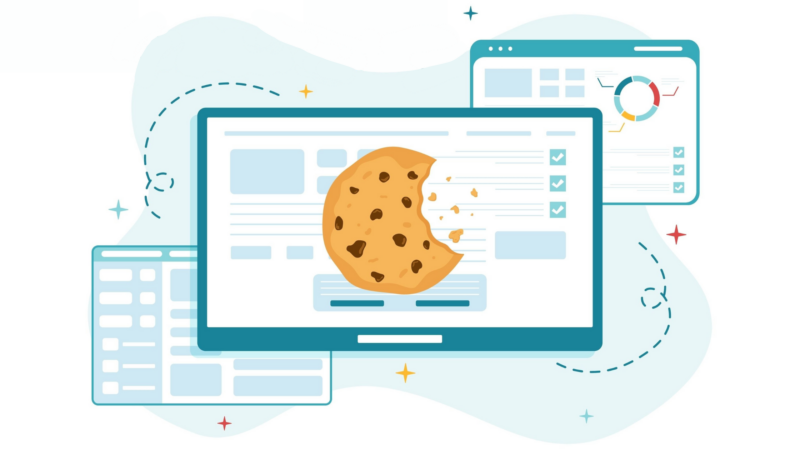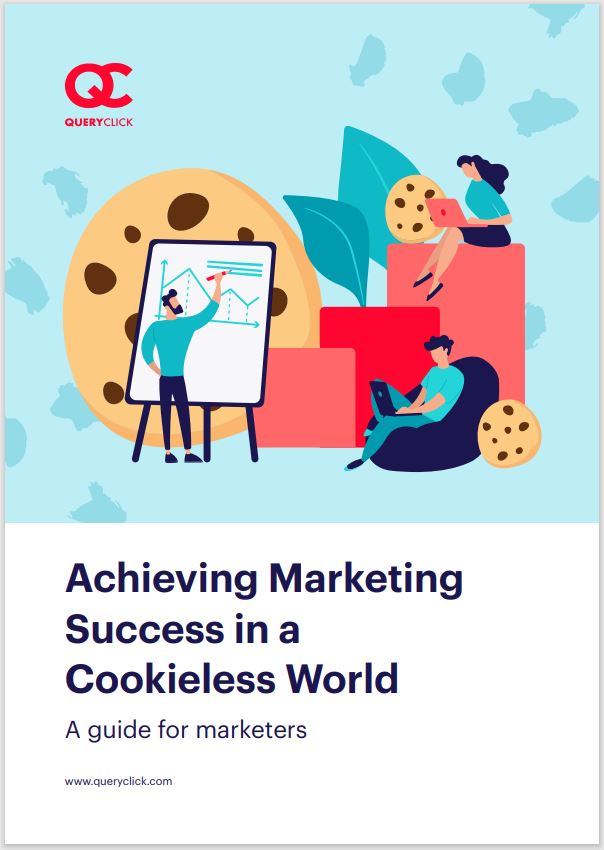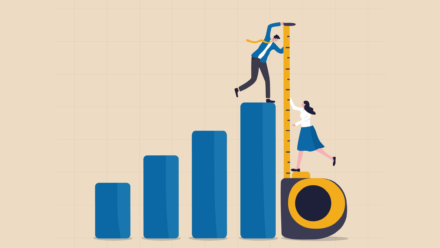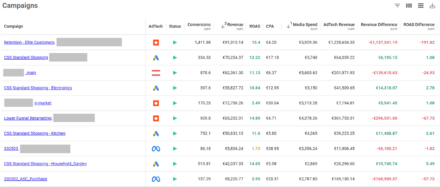Will Google Really Ditch the Cookie?

It’s been 4 years since Google first announced it will be removing third-party cookies from Chrome.
Since then, we’ve seen multiple delays on the plan which has left marketers doubting if Google will really flick the switch and make the change later this year.
QueryClick CEO and Founder, Chris Liversidge, tackled this topic in our latest webinar: Will Google Really Cut Out the Cookie?, where he covered:
- The latest updates on Google’s removal of third-party cookies
- The main reasons why it will be happening this year
- Top tips for preparing for a cookieless future
You can watch the full session here.
Or keep reading to find out the main points that were raised by Chris during the session.
Will Google cut out the cookie?
Chris started the session by running a poll with the webinar audience: Do you think that Google will really cut out the cookie?
The results were very interesting.
From those watching the webinar live, 75% answered ‘No’.
So, it seems that Google constantly moving the goalposts has left a lot of doubt amongst marketers.
However, Chris shared that he is firmly in the ‘Yes’ camp, where just 25% of attendees also sat.
He shared his reasons for this in the main part of the webinar.
But first, provided a quick overview of where we sit currently in Google’s timeline.
When is the removal of cookies happening?
As shared in the intro, Google first made the announcement that they were looking to remove third-party cookies from its Chrome browser over 4 years ago.
Since then, we’ve seen multiple delays.
Following the original announcement, Google committed to a 2022 deadline for the change back in 2020.
This was then delayed to the second half of 2023, in June 2022.
And in July 2022, Google announced it was delaying the deprecation again, with third-party cookies set to be gone from its Chrome browser by Q3 2024.
And its proposed solutions available to begin using from Q3 2023.
3 reasons why Google will stick to its timeline… this time
So, as mentioned earlier, Chris shared he is firmly in the ‘Yes’ camp when it comes to believing that Google will finally call time on its use of third-party cookies in Chrome.
To see if any of the 75% answering ‘No’ could be convinced, he shared his two cents on the issue.
1. Google’s available solutions have been severely diluted
For starters, the process is already underway.
1% of Chrome and Android devices currently have access to the new solutions proposed by Google.

And those solutions have changed quite a bit from their original proposal.
Google’s previous deadlines were set when there was still an active dialogue surrounding the possible solutions that could be offered.
Back then, there were around 6 or 7 likely replacements for third-party cookies in discussion. Including FLoC, which was quickly removed from its Privacy Sandbox due to a high level of criticism within the industry.
Following increased privacy concerns about Google’s proposed solutions, these were watered down to provide us with the two options we now have left:
- Topics for prospecting
- Protected Audience API (previously known as FLEDGE) for remarketing
Both Topics and the Protected Audience API require opt-ins to provide adequate privacy protection. And it is unlikely that they can be watered down any further without making them unusable for marketers.
2. Google’s recent case study yields questionable results

Google recently released a case study which revealed that, when they were testing Topics and the Protected Audience API, they were able to decrease spend by 2-7% in a side-by-side comparison with third-party cookie targeting.
However, that also brought a 1-2% reduction in conversions per dollar.
As a result, they were able to improve efficiency by reducing spend. But by reducing spend, this also meant they produced fewer conversions.
So, this brings the effectiveness of these technologies for driving growth into question for marketers – and particularly Paid Media marketers.
3. Delaying prevents focus on more pressing matters
Another reason why it’s unlikely that Google will delay the removal again, is that it has much bigger fish to fry at the moment.
Mainly the issue it faces surrounding the illegality of Google Analytics (and GA4).
We’ve covered this in a previous webinar, but Chris shared a quick overview of the issue at hand.
Google has faced increasing regulatory pressure about GDPR compliance within its analytics platforms.
This stems from the Schrems II ruling in 2020, which ruled that businesses cannot offload responsibility for data compliance onto their technology provider, and should retain GDPR liability if EU data is processed outside the EU.
This is where Google Analytics falls short. As is often the case, they process data within the US which violates GDPR laws as they have no framework in place to prevent PII (personally identifiable information) from being accessed.
And the issue is becoming more serious as technology providers are being held to account.
Meta were recently fixed with a $1.2 billion fine from European lawmakers for for ‘systematic, repetitive and continuous’ transfer to the US of data belonging to EU residents.
Not to mention Austria, France Italy, Sweden and Belgium have all declared Google Analytics illegal from a GDPR perspective.
So, getting rid of third-party cookies this year allows Google to move forwards on these more meaningful areas. And work to provide marketers with an analytics platform that is fit for purpose.
Related: What Are the Alternatives to GA4?
How to prepare for the cookieless future
So, what is the alternative for marketers?
The reality is, the removal of third-party cookies is no great loss for marketers.
Our own research has found that the data provided by cookie-based measurement is around 80% inaccurate.
Meaning you’re making important marketing decisions based on severely broken data.
AI is becoming increasingly prevalent in the marketing world, with the release of tools like ChatGPT and Google’s Bard catapulting it into the forefront.
Free download: Achieving Marketing Success in a Cookieless World
And there’s room for AI to maximise our measurement potential too.
By replacing cookies with AI, we’ve been able to double the average touchpoints that can be seen within a user journey within an analytics tool.
That’s twice the amount of data that cookie-based tools – like Google Analytics – can provide.
And the AI used to stitch together those touchpoints into complete journeys functions at over 95% accuracy – vs 20% for those cookie-based tools.
So, by investing in AI, we can revolutionise our marketing measurement to make smarter spend decisions and drive growth.
Introducing Corvidae

The good news is, we’ve built an attribution tool that can do all of that.
And it’s the only fully cookieless attribution tool on the market.
By using Corvidae, you can futureproof yourself against these impending changes.
And maximise your marketing potential by seeing the full customer journey, allowing you to tweak your budget and spend in areas where there’s greater ROAS opportunities.
To find out more about Corvidae, visit our website. Or download our Getting Started with Corvidae guide below.
Getting Started with Corvidae
Own your marketing data & simplify your tech stack.
Have you read?
Chrome’s announcement on dropping cookie opt-in last month closed the door on a 5 year saga for marketers. But what is the landscape like in 2025 for cookie-based measurement?
Generative AI is transforming the way that marketers plan and assemble content for their Paid Ads. As big platforms like Google, Meta and TikTok increasingly build the tools needed to...
In a surprising move that has sparked heated debate, Mark Zuckerberg announced on his Instagram that Meta will be reducing its levels of censorship and in particular fact-checking on its...





